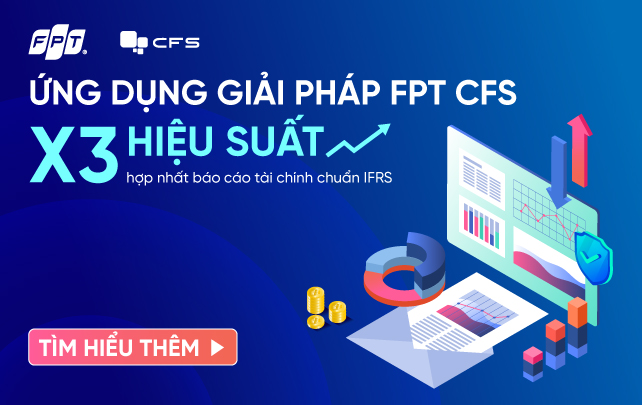With its global operation including 08 subsidiaries, 72 indirect subsidiaries, and 09 affiliated companies, FPT’s group accountants must oversee 350 separate sets of accounting books divided into six levels. Despite that massive amount of work, FPT Corporation only requires one accountant to consolidate the financial statements of all member companies. Furthermore, FPT was one of the earliest companies to submit financial reports in the VN30 list.
It was an unimaginable result for large and complex enterprises like FPT, according to Mr. Hoang Huu Chien, Chief Accountant of FPT Corporation.
First, with its large-scale and multi-field activities, must FPT’s accounting operations be complicated?
FPT is now the 13th largest enterprise by market capitalization on HoSE and the only tech company in the VN30 list. With its operations spanning numerous countries and territories, the Corporation has eight subsidiaries, 72 indirect subsidiaries, and nine affiliated companies with nearly 350 separate and consolidated accounting books divided into six levels. We perform accounting operations with 35 different currencies, having about 50 sets of accounting books of business units abroad. Those figures demonstrate the complexity of FPT’s accounting system.
In order to meet that need, we used to operate various ERP systems and accounting software for day-to-day bookkeeping.
In addition, the characteristics of listed companies have set even stricter requirements for the accounting system. Therefore, the preparation of separate financial statements, currency conversion, and financial consolidation is complicated and laborious work.

With such a complicated and huge workload, how are the accounting activities going, sir?
With such a tremendous number of books, “human workforce” is not the optimal choice. FPT Corporation’s office currently has six accountants. However, only one person is required to prepare the parent company’s financial statements, consolidate the financial statements of the whole Corporation (including member companies), and oversee the consolidation of the entire business units. The rest of the staff deals with capital, diverse subsectors of accounting, financial analysis and control.
Previously, we surveyed to assess the applicability of several tech solutions for financial statement consolidation in the market but have yet to get the expected results. In particular, we needed a solution to address the automation issue of preparing and consolidating FPT’s multi-level financial statements.
For this reason, my team and I have built our own solution for closing and consolidating financial statements, named FPT CFS, which has been applied to FPT Corporation since 2019.
Since its application, FPT CFS has helped FPT Corporation, its member companies at all levels, and domestic and foreign branches reduce pressure in preparing separate and consolidated financial statements. The system helps automate up to 99% of the preparation and consolidation of financial statements (including balance sheets, income statements, cash flow statements, and notes to financial statements), cutting much time to complete and release the reports.
Notably, a burning problem of accounting is the data segmentation on different ERP systems, accounting software, and other business management systems, which creates significant challenges in data collection, preparation, and consolidation of financial statements. That is not to mention the pressure of racing against time to meet the regulations on the submission and publication of reports. Fortunately, FPT CFS neatly solves the pain points.

After 2025, enterprises must prepare consolidated financial statements according to IFRS. Will this be a hindrance?
IFRS adoption may give rise to temporary differences and corresponding deferred tax expenses. These items must be considered and presented in separate and consolidated financial statements.
With FPT CFS, FPT is ready for parallel preparation and consolidation of financial statements following both VAS and IFRS. The system can help to recognize and record variance between the two standards. It also can take into account the temporary differences as well as corresponding deferred tax assets or liabilities.
Shortly, this solution will add a feature of automatically converting the financial statements from VAS to IFRS. Accordingly, users only need to declare parameters for the calculation models. FPT CFS will complete the rest.
A good solution may only be suited for some. Can FPT CFS be easily applied in other companies?
FPT CFS is certainly fitted as it is analyzed, designed, and built based on national and international standards with system ability and customizability. The solution can be integrated into multiple ERP systems with high security to meet the requirements of enterprises of all different sizes and domains. It even works well when a corporation must be in line with multiple standards and needs to be consolidated under different accounting standards at each level.
For sure, applying FPT CFS requires changes in mindsets, orientations, habits, and the determination of corporations’ leaders, managers, and employees. Only then can accounting activities and data be standardized, helping to automate the preparation and consolidation of financial statements.
In order to use FPT CFS, enterprises should conduct a comprehensive survey of ERP systems, related software, and applications to determine conditions for system integration. Next, the desired model should be clarified. After all, those results will lay the foundation to decide the infrastructure requirements for applying FPT CFS.












